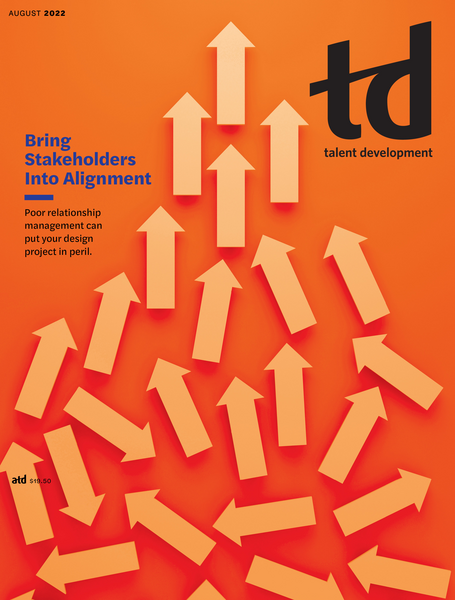TD Magazine Article
Are You Listening?
Companies that prioritize hearing from employees achieve business results.
Mon Aug 01 2022

What's on employees' minds? How are they feeling about their jobs, managers, and company culture, particularly given the past few disruptive years? Smart employers are expanding their listening activities to understand.
"Given the changing world, with everything that's happening, our data clearly shows that organizations know that listening matters more than ever before," says Emily Killham, global director of research and insights at business management consultant Perceptyx.
For its The State of Employee Listening report, the organization interviewed HR decision makers from more than 600 global organizations with 1,000 or more employees about their current employee listening strategy and plans for the future. It found that nearly all employers participate in some amount of formal listening to employees.
Approximately three-quarters said they were motivated to do more listening because of the pandemic and expect to increase their listening efforts during the next 12 months. Traditional organization-wide surveys remain the most popular choice for that. But more than half of respondents said their companies are using other listening channels, such as crowdsourcing, job life-cycle surveys, and passive listening by monitoring employee calendars and project management software.
More importantly, data analysis uncovered four stages of maturity for employee listening.
Stage 1: Episodic listeners (19 percent) conduct only one or two surveys a year. The HR department typically maintains ownership of the collected data, and follow-up actions are top-down.
Stage 2: Topical listeners (27 percent) conduct deep-dive listening around specific topics or events. Information is shared with managers, but most follow-up activity remains in HR.
Stage 3: Strategic listeners (28 percent) gather feedback on an ongoing basis. Managers proactively seek employee feedback when making decisions, and action occurs at multiple points in the organization.
Stage 4: Continuous conversationalists (26 percent) use a variety of active and passive listening channels and surveys. Results inform everyday business decisions, and leaders at all levels are responsible for communicating and acting on data and feedback.
Unfortunately, only one-third of respondents feel confident that their employee listening programs address organizational struggles. That may be because only stage 3 and 4 organizations prioritize manager access to data. Likewise, only 40 percent of stage 1 companies say listening consistently relates to other business results, compared to 95 percent of stage 4 organizations. Additionally, stage 4 organizations are 20 times more likely to have a clear set of outcomes they hope to achieve through their listening activities.
"It is essential to match the goals of a listening program to the strategies most likely to achieve those goals" asserts Killham.

